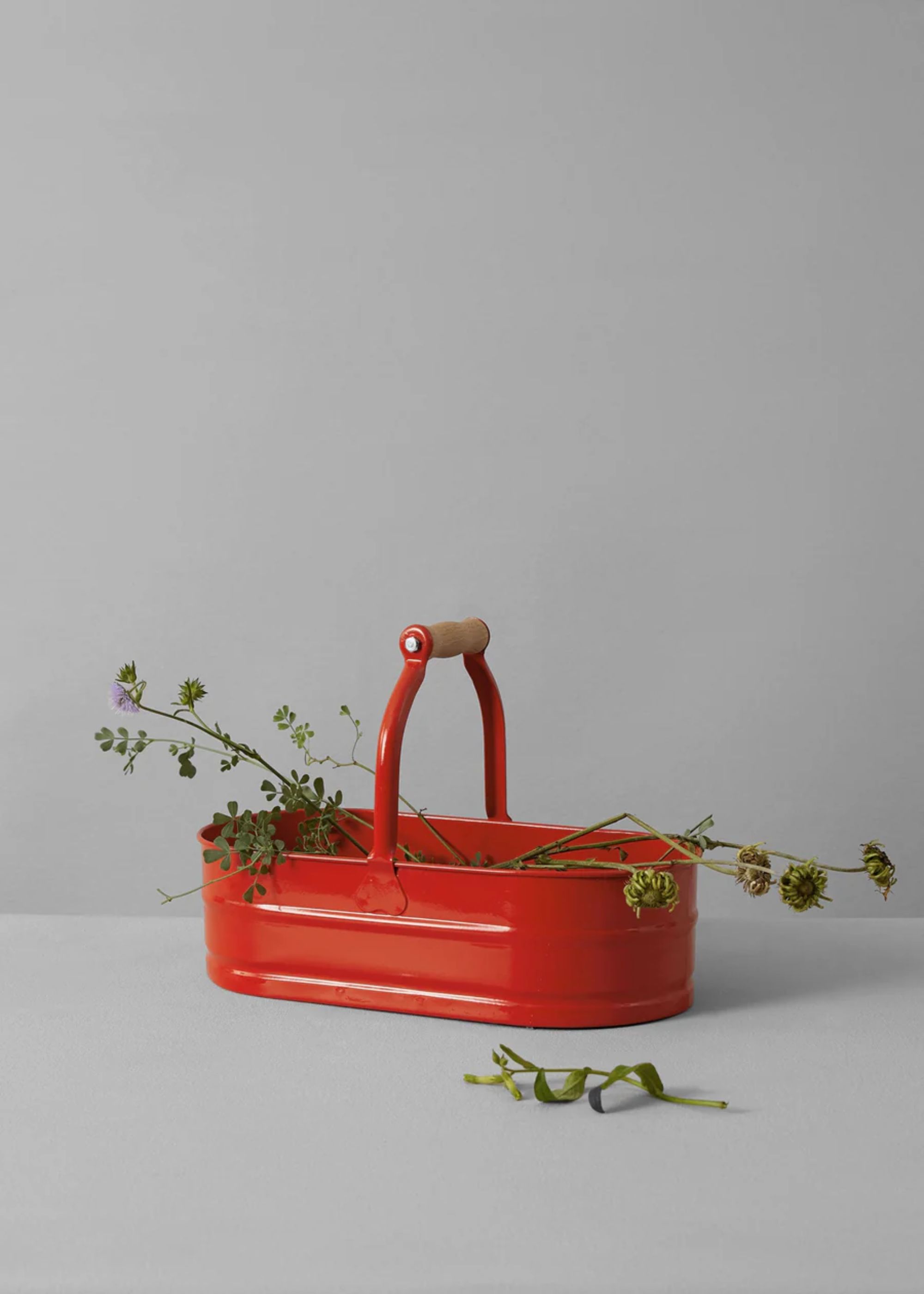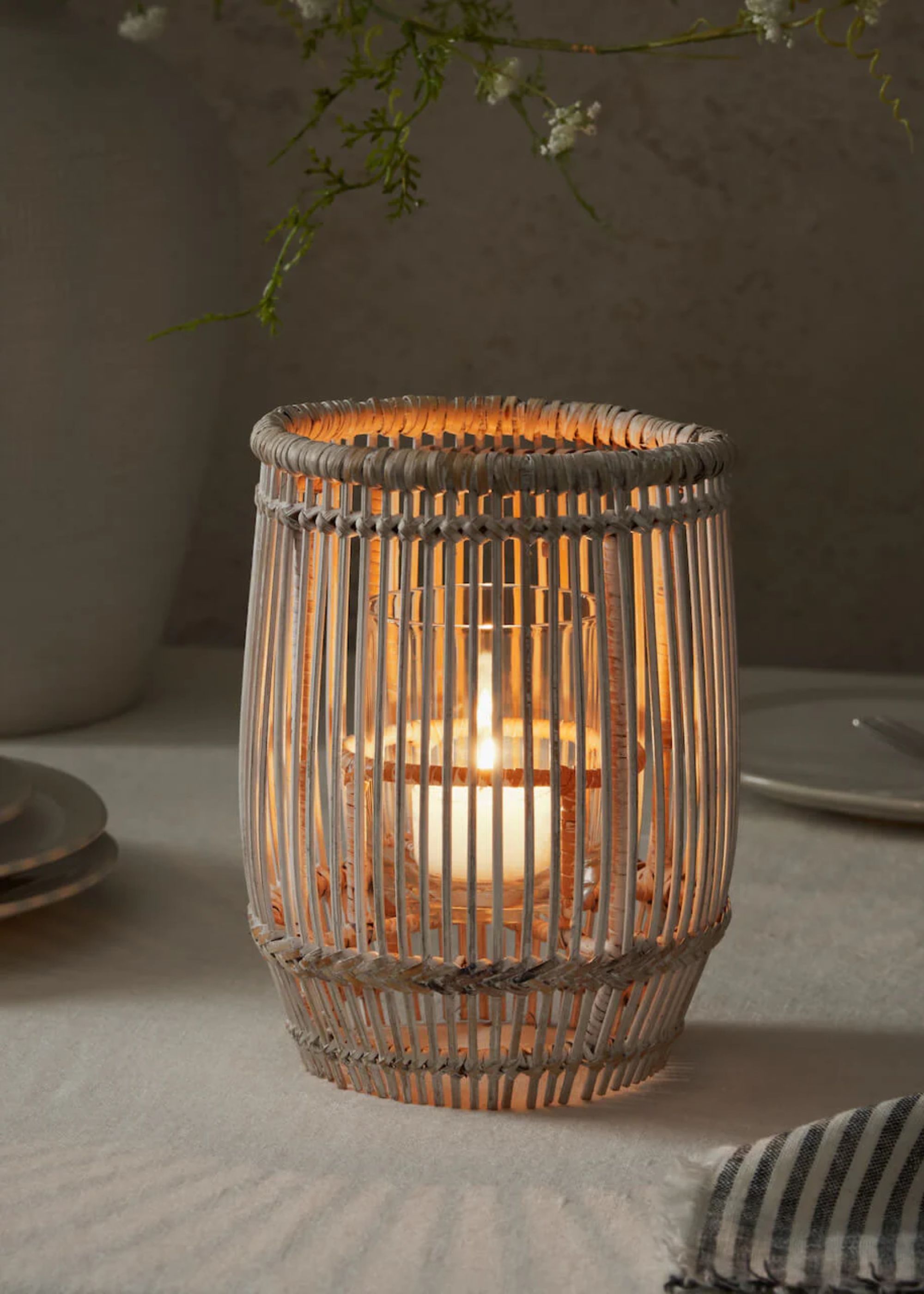6 Hard Landscaping Mistakes That Are Trapping Rainwater and 'Drowning' Your Garden in Wet Weather
Prevent your garden from becoming a swamp after a downpour with this expert advice from landscape designers
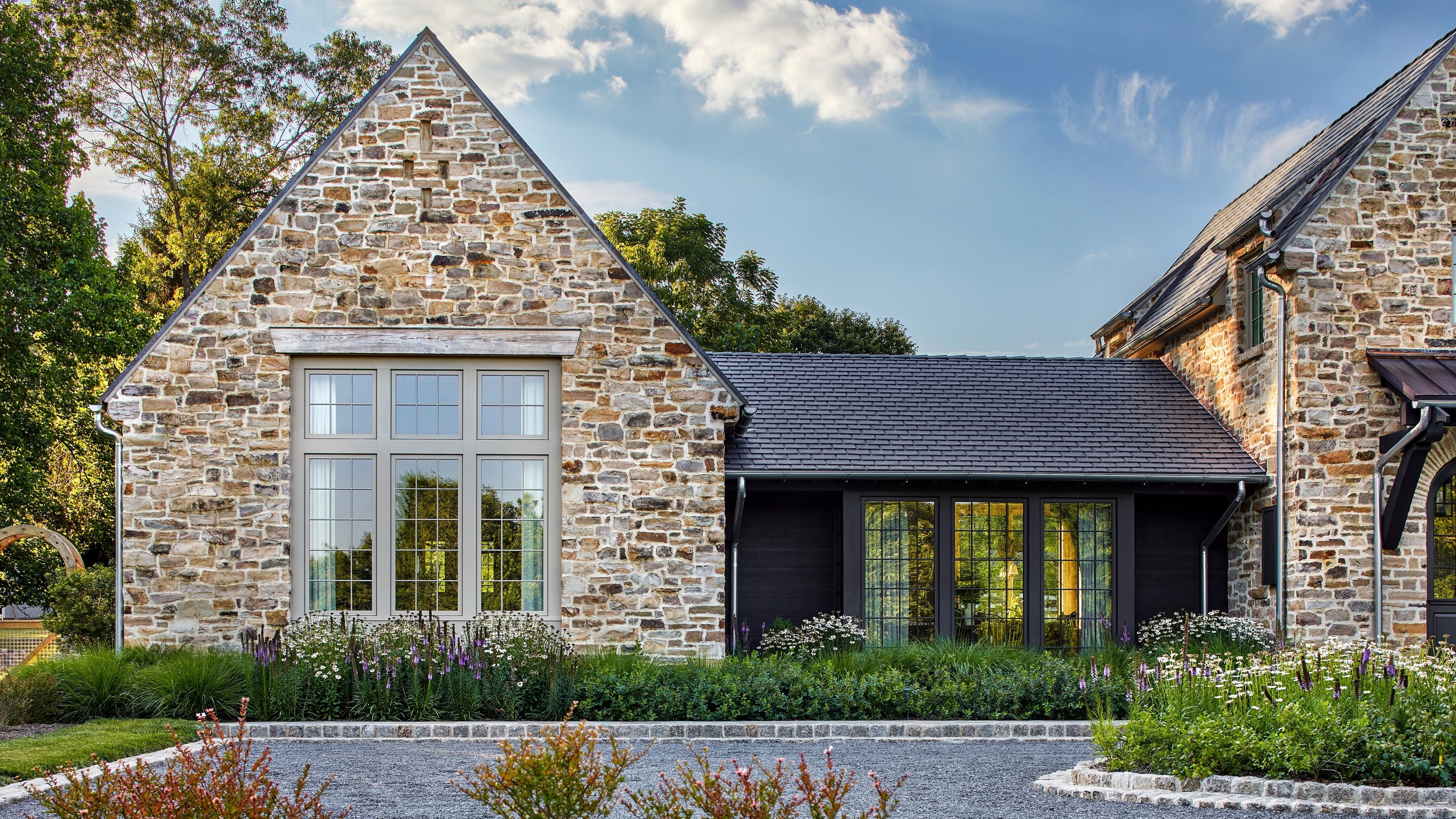
When planning a garden, however small or large, it's easy to focus mostly on the aesthetics. The plants, trees, and flowers, along with their colors, heights, and textures, and the wide array of choices in natural stone, reclaimed bricks, or stylish surfaces, are the exciting parts.
Yet, the eternal balance of form and function is as important with landscaping ideas as it is with any other type of design. And here's where drainage comes into the conversation. It's not fun or sexy, but without sufficient drainage, your gorgeous garden design could turn into a swamp after the first downpour.
Any landscaper worth their salt will incorporate subtle drainage ideas throughout a scheme, so that rainwater can drain away easily, and not 'drown' your garden. Here are six common hard landscaping mistakes that professionals caution against, along with tips on how to avoid them.
Knowing in advance how to prevent soggy soil and saturated hard surfaces will minimize damage and keep your modern garden looking good.
"Great garden design isn’t just about choosing the right paving slabs or planting schemes; it’s about understanding water movement too," says Gina Taylor, founder, East London Garden Design. "When hard landscaping is done well, it quietly manages rainwater, protecting your home, keeping surfaces safe, and allowing plants to thrive."
1. Using Non-Permeable Surfaces
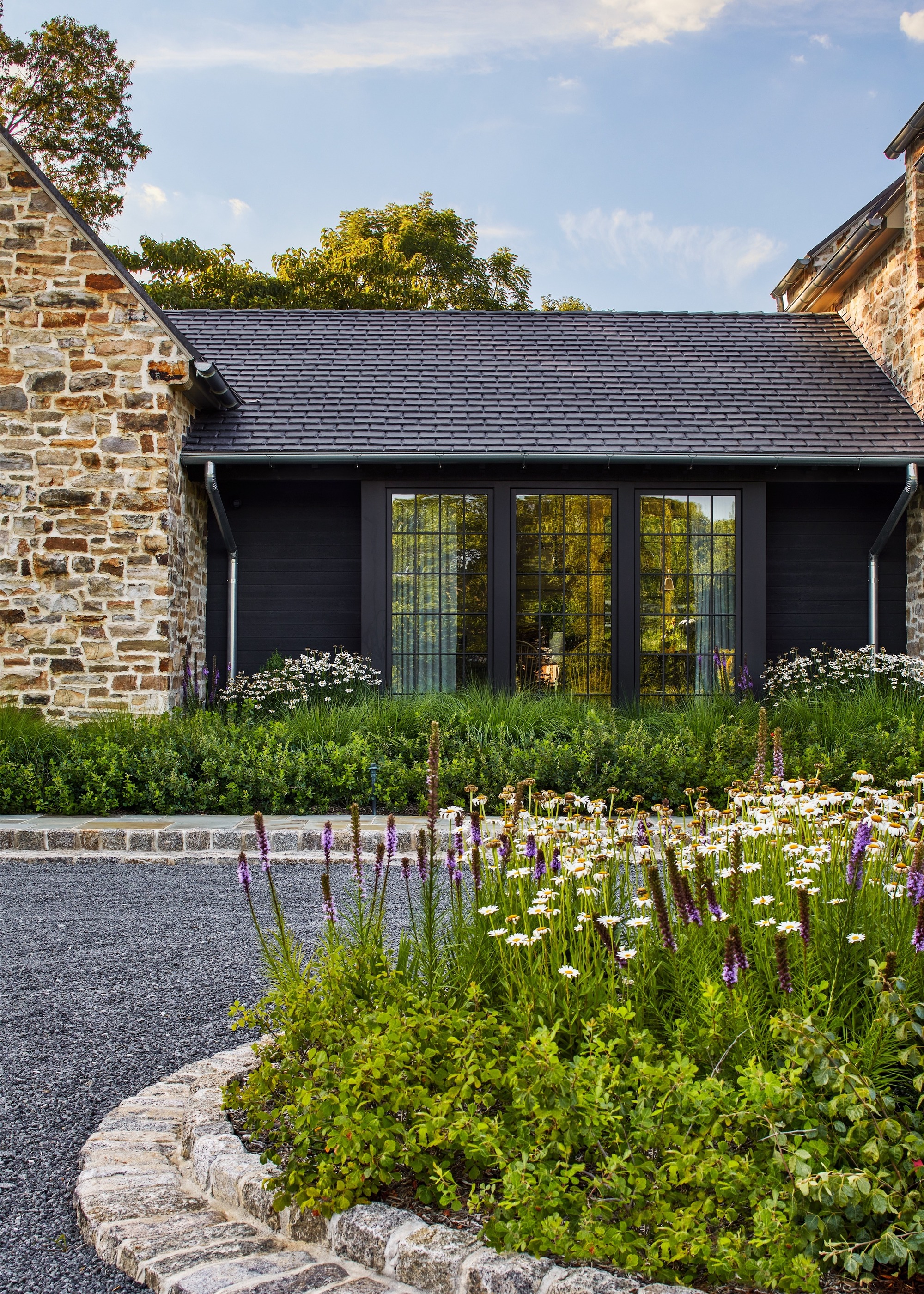
A permeable driveway at the front of this property adds charm, whilst providing a practical solution when it rains.
Laying a path, driveway or a patio with a non-permeable (also known as impermeable) surface, such as concrete, means that rainwater is unable to soak through to the soil or substrate beneath. In the UK non-permeable driveways or paved areas over 5 sqm at the front of a property usually require planning permission, as the run-off will need to flow into the public drainage system, and the extra rainwater can potentially cause flooding issues.
At the rear of the property, depending on the patio size, you may not need planning permission for a non-permeable surface, however rainwater will still need to be directed somewhere to prevent problems.
The Livingetc newsletters are your inside source for what’s shaping interiors now - and what’s next. Discover trend forecasts, smart style ideas, and curated shopping inspiration that brings design to life. Subscribe today and stay ahead of the curve.
"Large expanses of non-porous paving, sealed concrete, or tightly mortared blocks might look sleek, but they behave like a giant umbrella," says Gina Taylor. "Rain can’t soak through, so water simply runs off, collecting in low spots or flooding lawns and flowerbeds.
"Go for Sustainable Drainage Systems (SuDS)-compliant materials wherever possible. Permeable clay or porcelain pavers laid on an open-graded sub-base, resin-bound gravel, or decorative gravel set in stabiliser grids all allow rainwater to filter into the soil naturally.
"This not only prevents flooding but also helps recharge groundwater, which is vital for plants. Mixing materials — such as pairing a paved terrace with permeable gravel paths — adds texture and character while improving drainage. River pebble stones fill a narrow joint between pale pavers, doubling as an elegant design feature and a miniature French drain. This is a clear example of sustainable drainage design that looks good too."
Adam Sexton, landscape designer & senior associate, Richardson & Associates agrees with Gina. "While materials like concrete or solid pavers are durable, using them extensively without considering how water will drain off them is a common oversight," he says. "They create large impermeable surfaces that can lead to significant runoff and ponding if not managed. To prevent this, we often recommend incorporating permeable paving materials where suitable, or designing the hardscape with integrated channels, swales, or rain gardens to capture and infiltrate stormwater on-site."

Gina Taylor is the founder and lead designer of East London Garden Design, a studio specialising in contemporary urban gardens, courtyards, and rooftops. Based in East London, Gina is passionate about creating outdoor spaces that feel like a true extension of the home — places that are welcoming, personal, and connected to their surroundings.

Adam is a landscape designer, creative thinker, and garden enthusiast. He joined Richardson&Associates in 2020 and is passionate about residential landscapes and ecological restoration. Adam earned his bachelor’s degree in Landscape Architecture from Virginia Tech in 2010 and has over a decade of design detailing and construction implementation for projects that range from public parks, campuses, international urban planning, and estate master planning.
2. Ignoring Soil Conditions and Natural Drainage
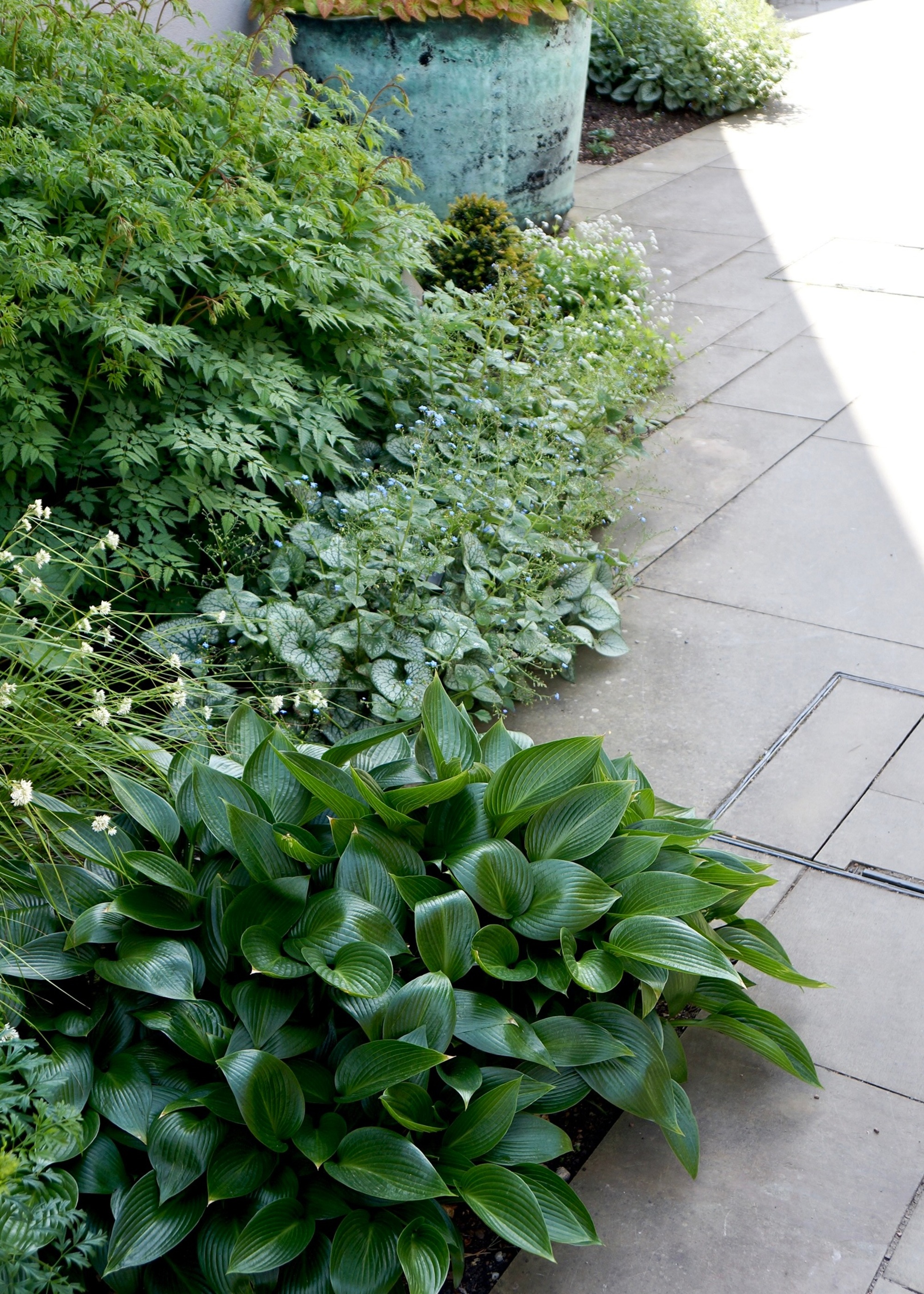
Subtle drainage trenches ensure these plants are irrigated by rainfall and rarely, if ever, require supplemental watering.
Keen gardeners may consider their soil type when it comes to choosing plants and flower bed ideas, but it may not occur to many of us to think about soil type when selecting hard surfaces for the landscape. Yet it's a factor worth thinking about if you want to avoid pools and puddles. Designing your hardscape with the surrounding terrain in mind, can even help to keep your plants evenly watered.
"Many gardens are designed without considering the soil type or natural slope of the land," says Gina. "Heavy clay soils, for example, hold water for days, while gardens on a slope often channel water straight toward the house. Without proper planning, this leads to soggy lawns and oversaturated planting areas that struggle to thrive.
Gina continues, "To prevent this, survey your site carefully before starting any hard landscaping. On heavy clay soil, create drainage trenches filled with gravel or install French drains along key pathways. Where space allows, design a swale or shallow rain garden at the lowest point of your garden to capture and store excess water while adding biodiversity. In flatter gardens, subtle grading of paths and patios combined with raised planting beds can help control the movement of water."
In a similar vein, UK-based landscape designer Charlotte Rowe finds that heavily irrigated lawns can lead to excess surface water when the wet weather returns. "Lawn irrigation in residential gardens is a bête noire of our studio," says Charlotte. "It is totally unnecessary and can lead to flooding across lawns and planting beds, which can have a knock-on effect for the whole garden, including the hard landscaping.
"A bit of dry yellow grass is not really an issue during hot, dry weather – and, as has been demonstrated over the last few weeks of rain, grass returns to green very quickly."

Charlotte Rowe established her eponymous studio in West London in 2004 and has since designed more than 300 gardens, terraces and landscapes in London, the UK and overseas. Originally an art historian, she worked for many years in marketing and communications before gaining a post-graduate diploma in Residential Landscape and Garden Architecture. Charlotte regularly speaks on landscape design around the world. Charlotte Rowe is a fully accredited member of the Society of Garden + Landscape Designers and Charlotte Rowe Garden Design is an SGLD practice member.
3. Laying Paving Without a Proper Gradient
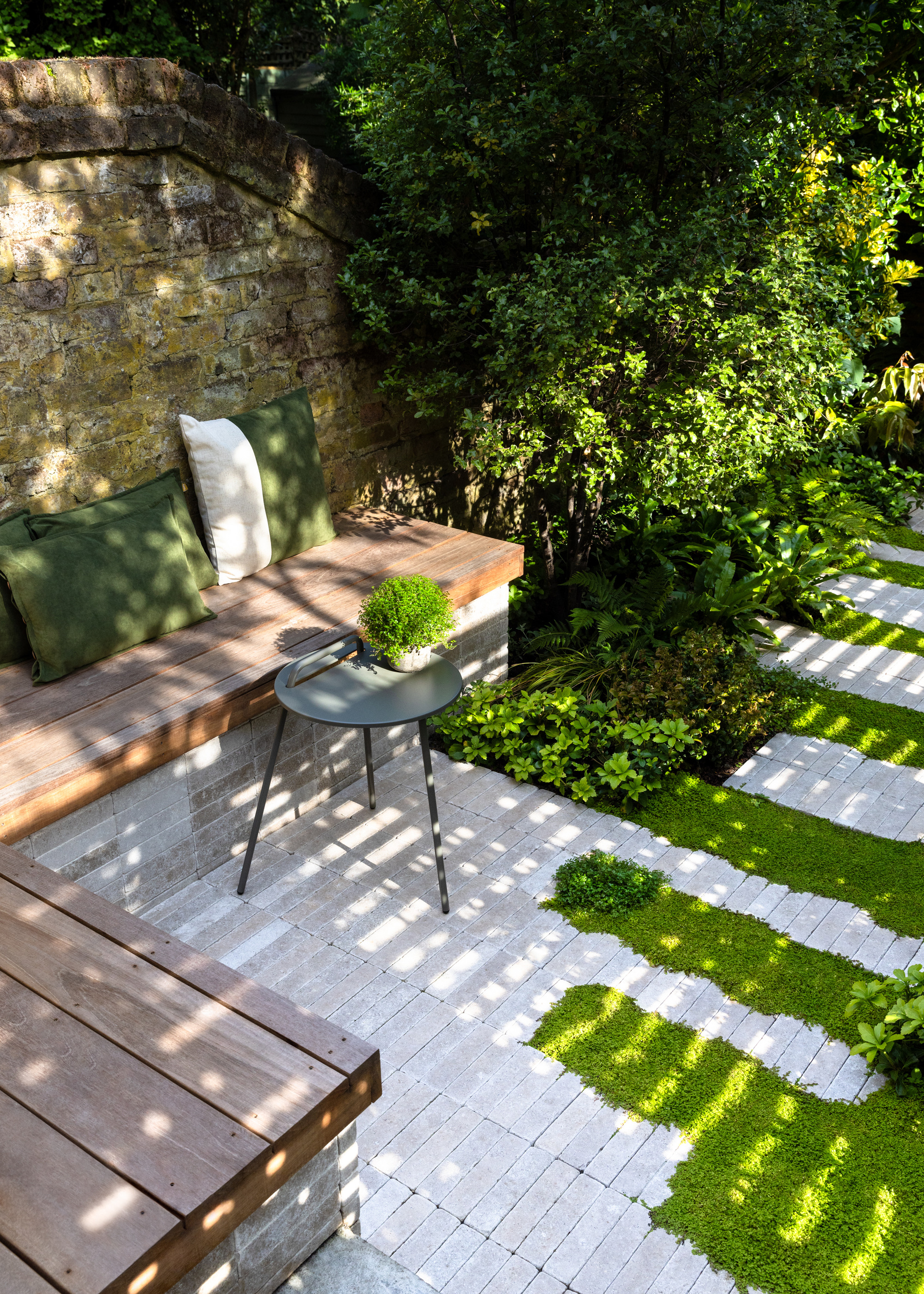
A slight slope and surrounding groundcover plants allow rain to soak away into the soil.
Rainwater needs to be able to soak away, ideally into soil or plantings, rather than the municipal drainage system. If a patio or paved area is completely flat and made of non-permeable material, this becomes impossible. A slight slope or subtle fall towards gravel, grass, groundcover plants, or a soakaway channel (and away from your property) can enable rain to run off and soak away easily.
"One of the most common errors is installing patios and terraces completely flat," explains Gina. "It might look neat at first, but without a subtle fall, rainwater has nowhere to go. The result is standing puddles on your patio, stained paving, slippery algae growth, and, in some cases, water finding its way into your home.
"A good patio or terrace should have a fall of 1:60–1:80 (roughly 12–17 mm per meter) leading away from the property. Where water needs to cross door thresholds, install a discreet channel or slot drain connected to a soakaway or a rain garden. Choosing a slightly textured paving finish also helps prevent surface water from lingering, giving you a safer and cleaner surface year-round."
"Not establishing proper grading away from structures or low points in the garden is one of the most frequent mistakes we see, too," says Adam. "If the hardscape, such as a patio or pathway, is flat or slopes towards a building or planting bed, water will naturally collect there. To avoid this, we always ensure a minimum 1-2% slope away from any structures, directing water towards appropriate drainage points or pervious areas."
4. Lack of Adequate Drainage Systems
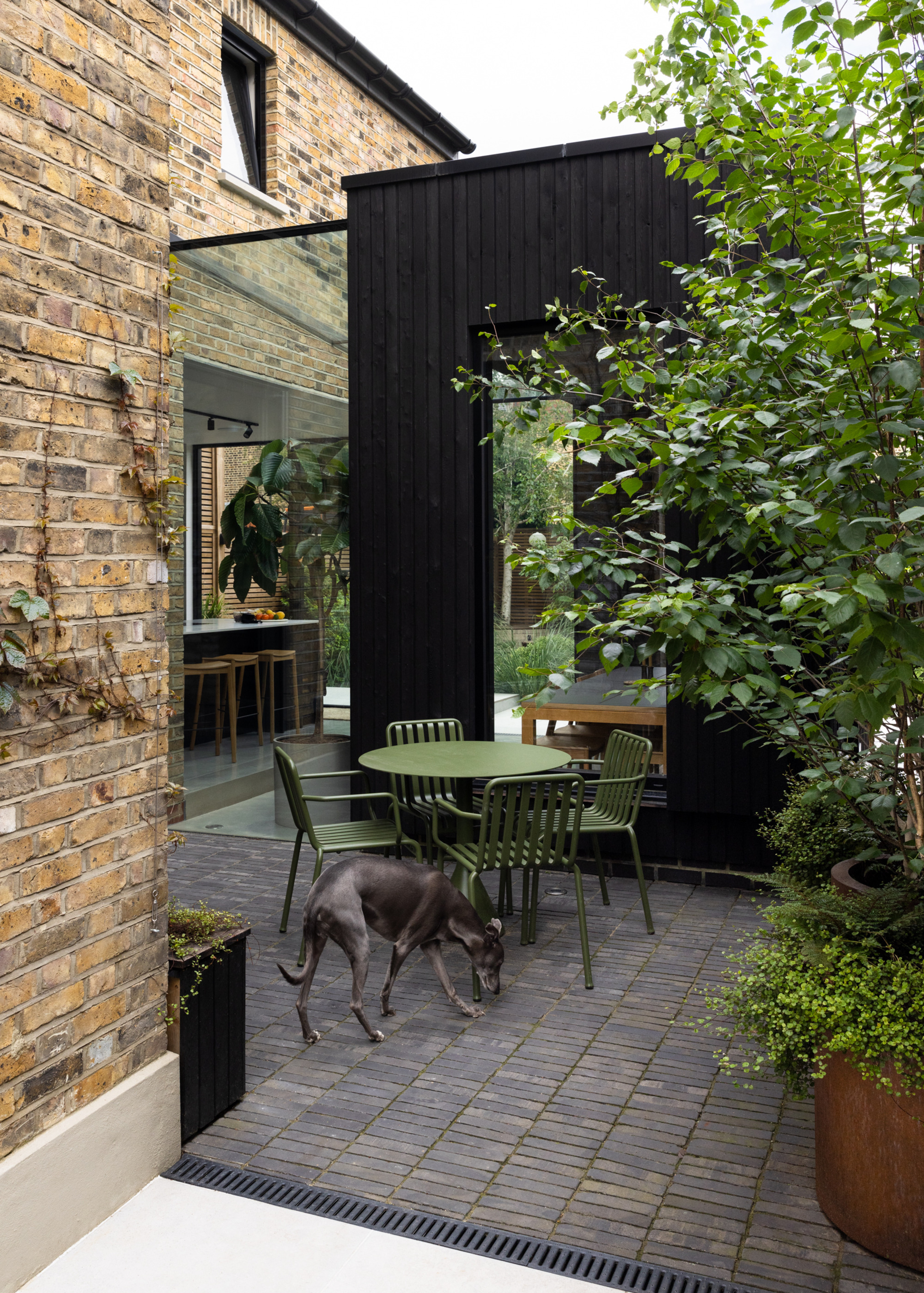
A slim drainage system in this terrace garden keeps puddles off the patio.
Even with permeable hardscaping materials and adequate slopes, an excess of rainfall can still be problematic, if you live in a region prone to wet weather. If that's the case, subtle drainage systems can be installed, particularly if you have a large patio or more paving than plantings.
"Sometimes, even with proper grading, the sheer volume of water during heavy rain can overwhelm a landscape if there aren't sufficient drainage solutions in place," explains Adam. "This includes not installing catch basins, French drains, or permeable paving in areas prone to water accumulation. We would always assess the site's hydrology and install appropriate subsurface drainage, such as trench drains or gravel-filled swales, to manage runoff effectively."
"Not having adequate drainage on paved areas is a real issue and is likely to end in problems with surface water," agrees landscape designer Charlotte Rowe. "Most garden terraces need some kind of drain, otherwise the rain will just sit on top of the paving. We tend to include narrow slot drains, which work really well, but are unobtrusive and look attractive and discreet. This is particularly important at the bottom of any steps and stairs."
5. Neglecting the Sub-Base
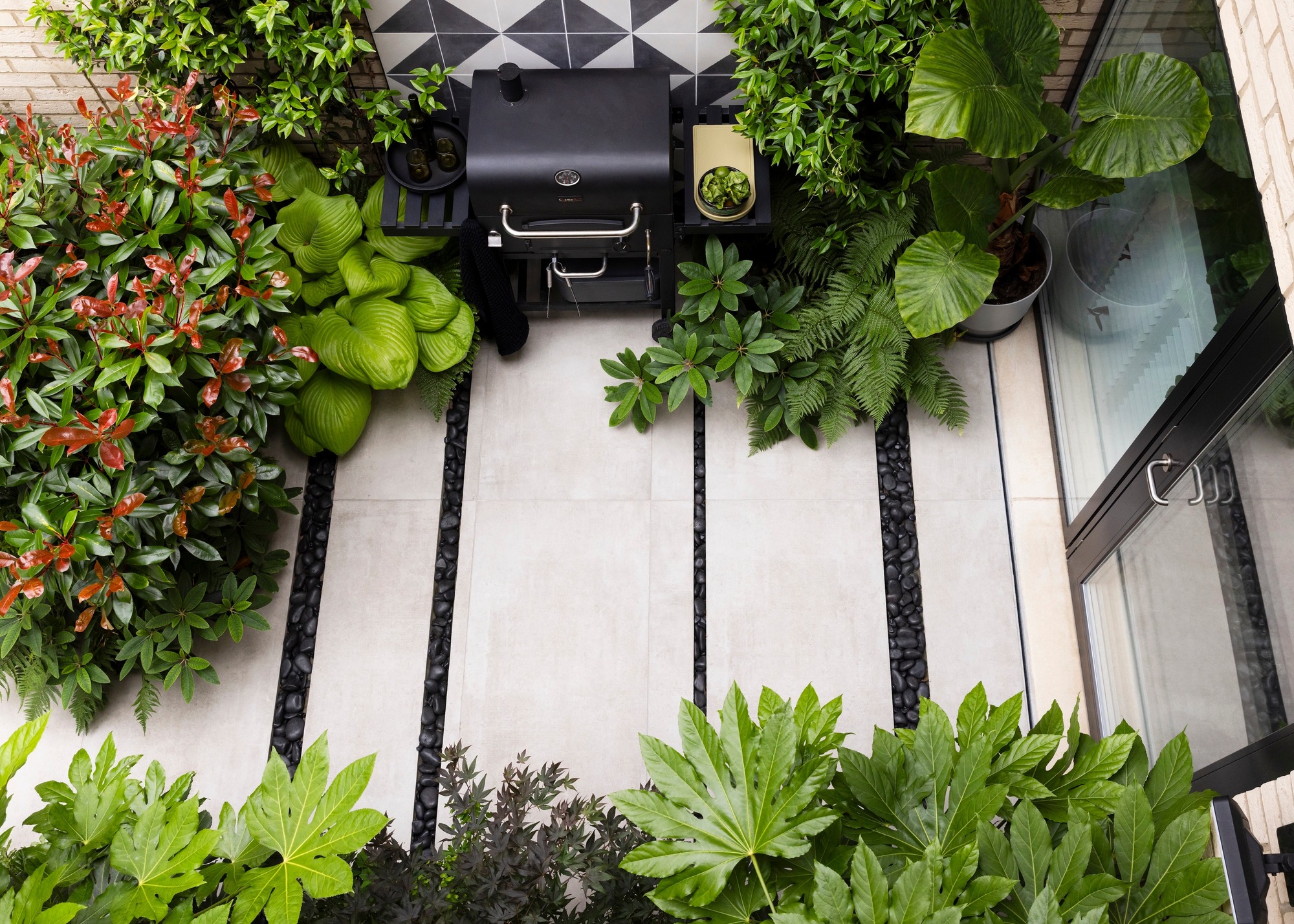
The parts you can't see underneath are as important as the parts you can see, when it comes to patios and paving.
Another element professional landscape designers will consider in a modern garden scheme is the sub-base or sub-strate beneath paved or hardscaped areas. This is vitally important when it comes to drainage (and something that DIY patio layers may miss). Expert installation will enable good drainage and mitigate any issues.
"Skipping a properly designed sub-base is one of the most expensive mistakes you can make," warns Gina. "Without depth and drainage, paving slabs shift, heave, and hold water underneath. On clay soils especially, the garden becomes saturated because there’s no path for water to escape.
"A solid, well-draining foundation is crucial. For patios, aim for a 100–150 mm deep sub-base; for driveways, go up to 200 mm. Always use an open-graded (free-draining) aggregate (MOT Type 1), compacted in layers, with a geotextile separator between soil and stone to stop sub-base migration. This allows water to percolate away instead of pooling beneath the surface. Over clay soils, incorporating perforated land drains at low points ensures excess water has somewhere to escape."
"All paving should be laid on an adequate substrate," agrees Charlotte. "Poor installation of hard landscaping can cause water retention issues."
6. Not Blending Planting With Paving
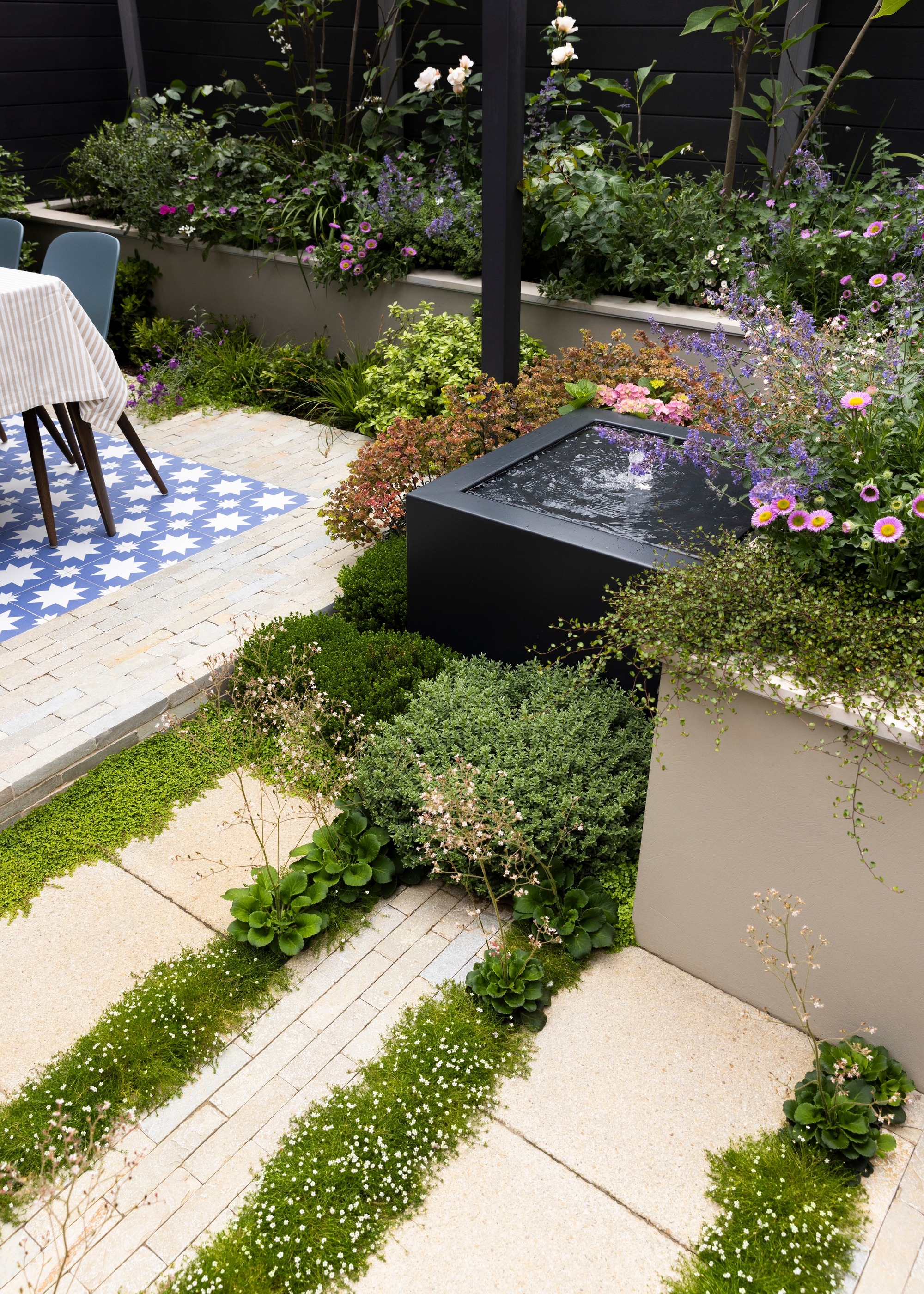
Not just an attractive detail, these pretty 'green seams' are a clever drainage strategy too.
With most backyard ideas and garden path ideas, there is a tendency to separate paving and patio areas from lawns and plantings. Often this is for practical reasons, such as access or usage, but Gina Taylor is a fan of blending the two. Not only does this create a softer, more natural style, but it is also another opportunity to incorporate more drainage subtly.
"Many people treat hard landscaping as a purely solid surface and miss the chance to integrate soft landscaping details," says Gina. "The result is a patio or path that sheds water instantly, creating drainage headaches elsewhere in the garden.
"A solution to this is paving units broken up with green seams, gravel bands, moss carpets, and pockets of groundcover planting. These are more than aesthetic choices — they’re drainage strategies. By fragmenting hard surfacing, water is slowed down and absorbed where it falls, keeping the whole garden more resilient in wet weather."
Modern Garden Accessories
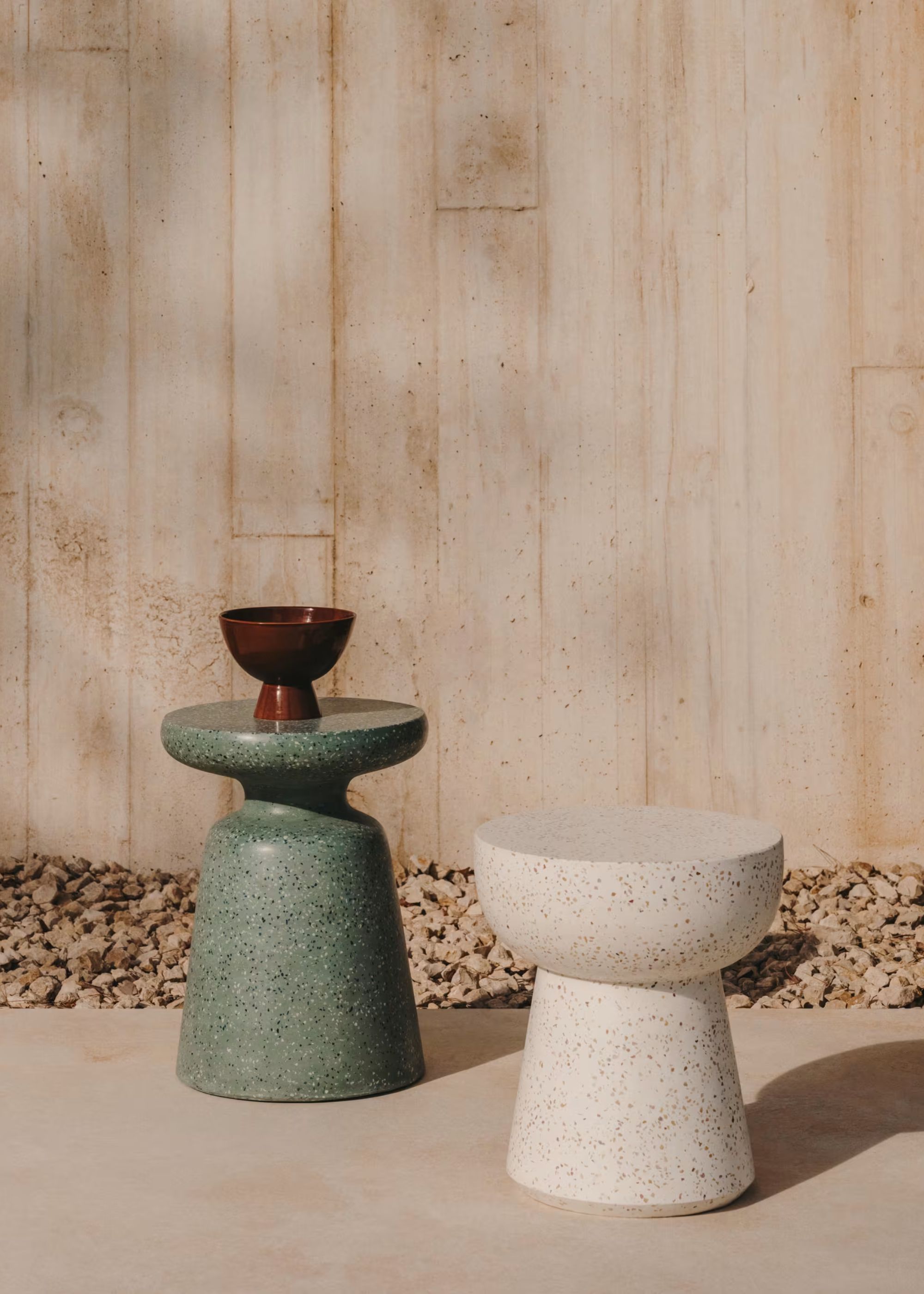
The perfect garden furniture, this Mesquida Outdoor Side Table in Green Terrazzo adds a touch of interest in any outdoor space. Made for both indoor and outdoor use, this piece is crafted from natural materials, ensuring each one is unique with its own distinct shades and textures.
FAQs
What Is Classed as Hard Landscaping?
The term hard landscaping refers to solid surface areas, such as pathways, driveways, patios, steps, and walls, that are created with 'hard' materials such as brick, stone, tiles, pavers or concrete etc. Conversely, soft landscaping refers to grass, trees, shrubs and plants. Most landscape gardeners recommend a good balance between the two, with generally less hardscape than softscape.
"A garden should not have too much hard landscaping," says Charlotte Rowe. "A good percentage of the garden needs to soft and planted which can help mitigate any flooding problems."
Whatever the weather in your region, managing rainwater is becoming increasingly important. In dry areas redirecting, or collecting, any rainfall when it comes, for parched soil is extremely beneficial, while in wetter zones, a combination of good drainage solutions can prevent trapping rainwater or flooding - and keep your yard evenly irrigated without effort.
Jacky Parker is a freelance lifestyle journalist and writer, producing a wide range of features for magazines and digital platforms. She has written for Livingetc and its sister titles, Homes & Gardens and Country Homes & Interiors for more than 15 years, both as a freelance contributor and as Acting Digital Editor and Acting Style Content Editor, regularly reporting on the latest interiors, gardens and wellness inspiration, speaking to experts in their respective fields, and discovering the best tips.
Jacky has also written for other publications, including Sunday Times Style, The Telegraph, Architectural Digest, House Beautiful, ELLE Decoration, Red, Grand Designs and more.
